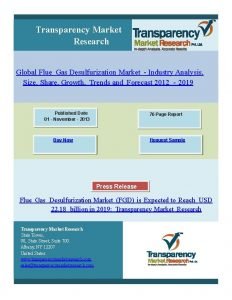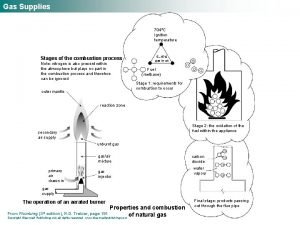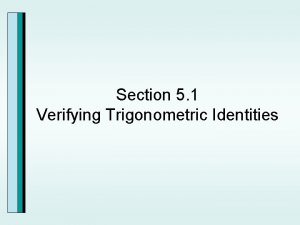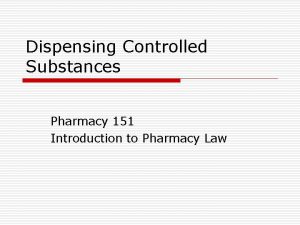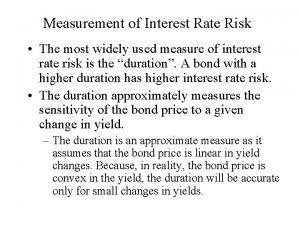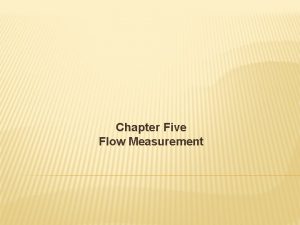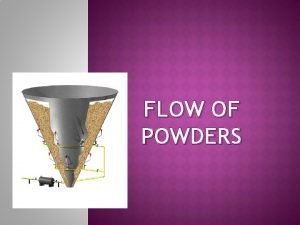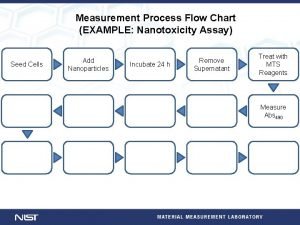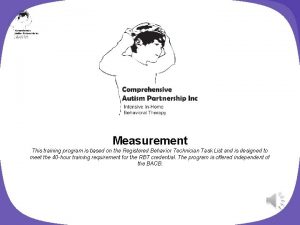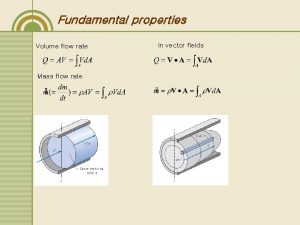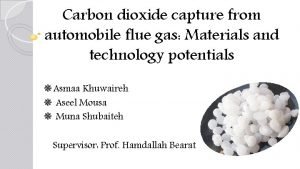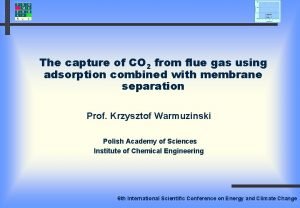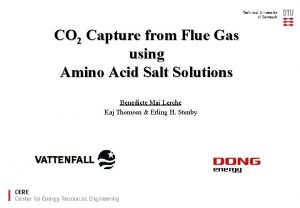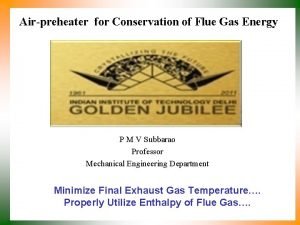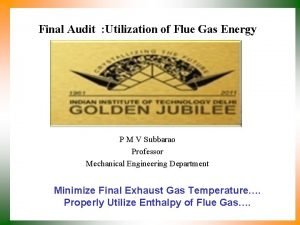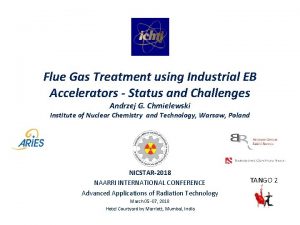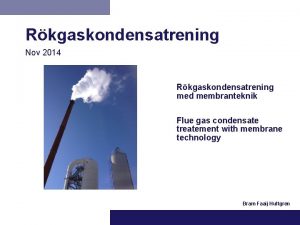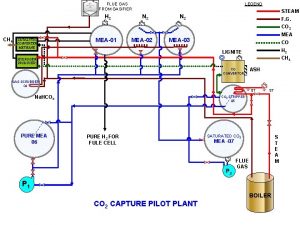Flue gas flow rate measurement for verifying continuous




























- Slides: 28

Flue gas flow rate measurement for verifying continuous monitoring at power stations according to EN ISO 16911 16 September 2016 Confidential Flue gas flow rate measurement 16/09/2016 for verifying continuous 1 monitoring at power stations according to EN ISO 16911 Restricted Public Internal

Context, challenges, objectives, work program Flue gas flow rate measurement 16/09/2016 for verifying continuous 2 monitoring at power stations according to EN ISO 16911

Context Flue gas flow monitoring — linked to European Directives, including the Industrial Emissions Directive (IED), mass emissions reporting for E-PRTR and the EU Emissions Trading System (EU ETS) for CO 2 and for emissions of N 2 O and CH 4 from other sectors — subject to defined uncertainty requirements New standard EN ISO 16911: 2013 (part 1 and 2) — WG required flow monitors (AMS) for large combustion plants — Flow calculation still accepted if calibrated with yearly manual measurements Project: to calibrate flow monitors or calculate with — Point velocity measurement (20 point survey on 2 diameters): • Pitot tubes (DP) (L, S, 2 D, 3 D) • Vane anemometer (direct V) — Tracer dilution technique — Tracer transit time technique 16/09/2016 Flue gas flow rate measurement for verifying continuous monitoring at power stations according to EN ISO 16911 3

QAL 2 Calibration – Departures from EN 14181 QAL 2 test duration – at least one day (cf 3 days) if preliminary study is OK (CFD, …) ‘Daily Emission Limit Value’ = 1. 2 * Max measured flow Method D introduced (calibration line forced through zero) R 2 > 0. 9 (cf no requirement) ; o = 4% (cf σ0 = 10% of ELV for NOx) Competent Authority may require another value for σ0 Note - some instruments susceptible to flow disturbance 16/09/2016 Flue gas flow rate measurement for verifying continuous monitoring at power stations according to EN ISO 16911 4

Project objectives Define best practices Define a common approach to verify calculations Provide guidance on the choice of stack testing methods for use at coal and gas fired plant Method testing on wet stacks Method testing on flows with swirl (no appropriate location found) Provide tools to cross-compare calculated and measured flue gas flow rate and to apply the statistical tests required by the standard 16/09/2016 Flue gas flow rate measurement for verifying continuous monitoring at power stations according to EN ISO 16911 5

Work program Calibration of instruments — S-pitot, L-pitot, 3 D pitot, Vane anemometers Measurements at a gas fired power station (Field trial 1: CCGT) — S-Pitot, L-pitots, 3 D pitot, vane anemometers, tracer gas injection Measurements at a coal fired power station (Field trial 2: wet stack) — S-Pitot, L-pitots, 3 D pitot, vane anemometers, tracer gas injection Analysis — Result analysis — Development of the calculation tools — Conclusion drafting — Recommendation drafting for gas/coal fired and wet/dry gases 16/09/2016 Flue gas flow rate measurement for verifying continuous monitoring at power stations according to EN ISO 16911 6

Project partners 16/09/2016 Flue gas flow rate measurement for verifying continuous monitoring at power stations according to EN ISO 16911 7

Calibration of instruments chapter title Flue gas flow rate measurement 16/09/2016 for verifying continuous 8 monitoring at power stations according to EN ISO 16911

Calibration Objectives Comparison between calibration in France and in UK — To have the instruments calibrated for the project — To assess the compliance of the laboratory testing/calibration procedure with the new standard ISO/FDIS 16911 -1: 2012 requirements — To compare the calibration results obtained by the two laboratories To compare the calibrations, E-ON and LABORELEC thought that it was better to dissociate the uncertainty from the instrument and the uncertainty from the pressure sensor (pressure sensors of the laboratory were used) 16/09/2016 Flue gas flow rate measurement for verifying continuous monitoring at power stations according to EN ISO 16911 9

Calibration Performance characteristics and requirements for laboratory testing Parameter Criterion Method of determination Standard deviation of repeatability < 1 % of value Performance evaluation in wind of measurement in the laboratory Lack- of-fit (Linearity) tunnel at values spanning < 2 % of value Maximum deviation from linear fit at five velocity levels in wind tunnel Uncertainty due to calibration < 2 % of full scale From calibration certificate for measurement equipment Lowest measureable flow No criterion, but should be This parameter shall be determined, (limit of quantification) determined. but is not a performance requirement. The sensor shall not be used to measure flows below its limit of quantification Sensitivity to ambient temperature ≤ 2 % of range per 10 K Performance evaluation of measurement device. Note: Only external components are affected by ambient conditions. Sensitivity to atmospheric pressure Effect of angle of sensor to flow 16/09/2016 pressure ≤ 2% of range per 2 Performance evaluation of the KPa measurement device ≤ 3% at 15 degrees Performance Evaluation of (on the velocity? ) measurement device Flue gas flow rate measurement for verifying continuous monitoring at power stations according to EN ISO 16911 10

Calibration L-pitot Stable pitot-constants at different velocities France vs UK k-average: 0. 3% difference in velocity 16/09/2016 Flue gas flow rate measurement for verifying continuous monitoring at power stations according to EN ISO 16911 11

Calibration L-pitot Stable pitot-constants at different velocities France vs UK k-average: 0. 3% difference in velocity 16/09/2016 Flue gas flow rate measurement for verifying continuous monitoring at power stations according to EN ISO 16911 12

Calibration S-pitot Scattered pitot-constants at different velocities France: highest k vs lowest k → 2. 6% difference on the velocity UK: highest k vs lowest k → 1. 8% difference on the velocity (less spread) France vs UK k-average: 0. 7% difference in velocity 16/09/2016 Flue gas flow rate measurement for verifying continuous monitoring at power stations according to EN ISO 16911 13

Calibration S-pitot Scattered pitot-constants at different velocities France: highest k vs lowest k → 2. 6% difference on the velocity UK: highest k vs lowest k → 1. 8% difference on the velocity (less spread) France vs UK k-average: 0. 7% difference in velocity 16/09/2016 Flue gas flow rate measurement for verifying continuous monitoring at power stations according to EN ISO 16911 14

Calibration Vane anemometer during the UK calibrations, the biggest relative difference, (Vi-Vr)/Vr observed between the instrument reading and the reference velocity was at 2. 552 m/s with a deviation of -0. 062 m/s which is 2. 4% of the value and 0. 16% of the maximum velocity of 37. 47 m/s 16/09/2016 Flue gas flow rate measurement for verifying continuous monitoring at power stations according to EN ISO 16911 15

Calibration Vane anemometer 16/09/2016 Flue gas flow rate measurement for verifying continuous monitoring at power stations according to EN ISO 16911 16

Calibration 3 D-pitot Called “clinometers” by the laboratory No calibration possible in wind tunnels designed for generating laminar flow Only the ΔP were checked between P 1 -P 2 and between P 4 -P 5 for each of the five velocities 16/09/2016 Flue gas flow rate measurement for verifying continuous monitoring at power stations according to EN ISO 16911 17

Calibration Effect of the angle tested in France L-pitot S-pitot (E-ON) S-pitot (LBE) Anemomoter (LBE) Small velocity High velocity ± 2. 5 m/s ± 38 m/s +15° -15° 0. 99 0. 97 0. 99 0. 98 0. 99 1. 02 1. 03 1. 02 1. 04 1. 06 1. 00 0. 93 0. 98 0. 95 Pitots: — Square root of the pressure (impact on the velocity) @ ± 15°/ square root of the pressure @ 0° Anemometer: — Velocity @ ± 15°/ highest velocity @ ± 0° Standard: impact of turning the instruments of ± 15° has to be < 3 %. 16/09/2016 Flue gas flow rate measurement for verifying continuous monitoring at power stations according to EN ISO 16911 18

Calibration Effect of the angle tested in France: conclusion L-pitot S-pitot (E-ON) S-pitot (LBE) Anemomoter (LBE) ± 2. 5 m/s +15° -15° 0. 99 0. 97 0. 98 0. 99 1. 02 1. 04 1. 00 0. 93 ± 38 m/s +15° -15° 0. 99 0. 98 1. 02 1. 03 1. 06 0. 98 0. 95 Pitots: — Both S-pitots were not affected the same way and/or in the same magnitude — LBE S-pitot more sensitive than E-ON S-pitot — E-ON S-pitot: • stays in allowed limits in all cases — LBE S-pitot: • Negative angles not OK at low and high velocities (impact > 3% of the velocity) • positive angles not OK at high velocities — E-ON S-pitot and the L-pitots are less sensitive to the angles Anemometer: — more affected by negative angles 16/09/2016 Flue gas flow rate measurement for verifying continuous monitoring at power stations according to EN ISO 16911 19

Calibration Conclusions L-pitot — Less sensitive to velocities or angle variations — K-factor very stable with changing velocities S-pitot — Highest scattering for velocities below 15 m/s Vane anemometer — Very close to the reference velocities in Paris and more dispersed in the UK — Sensitive to angle variations — Suitable for laminar flows Expanded uncertainty — L-pitot < vane anemometer < S-pitot — For the pitots, other uncertainties should be taken into account to determine the calibration uncertainty. 16/09/2016 Flue gas flow rate measurement for verifying continuous monitoring at power stations according to EN ISO 16911 20

Field trial 1 CCGT Flue gas flow rate measurement 16/09/2016 for verifying continuous 21 monitoring at power stations according to EN ISO 16911

Field trial 1: CCGT 7 m diameter Test platform 16/09/2016 Flue gas flow rate measurement for verifying continuous monitoring at power stations according to EN ISO 16911 22

Field trial 1: CCGT Results Vgod Ref. L-Pitot 3 D Pitot S-Pitot Vane anemometer Tracer Gas Nm 3/s 0 vol % O 2 Dry, STP no. Meas Slope Max |D| limit |D| s. D Max s. D R 2 Limit R 2 14 15 15 14 20 1. 034 1. 005 1. 078 1. 042 0. 998 185. 5 178. 8 197. 5 185. 2 185. 4 5. 67 0. 76 12. 89 6. 86 0. 27 10. 42 9. 33 11. 25 9. 48 10. 40 3. 201 1. 642 3. 887 1. 255 3. 880 8. 679 8. 382 9. 254 8. 665 8. 742 0. 986 0. 996 0. 979 0. 998 0. 986 0. 90 Ref L-pitot: performs reasonably well, 3. 4% higher than the calculation (fixed point) 3 D-pitot: performs extremely well, 0. 5% higher than the calculation, individual measurements very stable, standard deviation of differences (s. D) is very small S-pitot: measurements are 7. 8% higher than the calculation, does not meet the criteria Vane anemometer: performs well, measurements are 4. 2% higher than the calculation, meets the criteria Tracer gas method: performs very well, measurements are 0. 2% lower. A slow drift occurred during the measurements which increased the deviation. 16/09/2016 Flue gas flow rate measurement for verifying continuous monitoring at power stations according to EN ISO 16911 23

Field trial 2 Coal fired power plant (wet stack) Flue gas flow rate measurement 16/09/2016 for verifying continuous 24 monitoring at power stations according to EN ISO 16911

Field trial 2: Wet stack 8 m diameter Test platform 16/09/2016 Flue gas flow rate measurement for verifying continuous monitoring at power stations according to EN ISO 16911 25

Field trial 2: Wet stack Results Vgod Ref. L-Pitot 3 D Pitot S-Pitot Vane anemometer Tracer Gas Nm 3/s no. Meas 10 11 11 9 19 Slope 1. 040 1. 000 1. 057 1. 066 1. 021 Max 565. 8 577. 2 604. 0 606. 0 592. 5 0 vol % O 2 Dry, STP From Plant calc. |D| limit |D| s. D Max s. D 19. 14 53. 14 44. 820 25. 501 0. 22 33. 63 10. 844 26. 795 27. 36 33. 67 8. 565 28. 010 30. 77 39. 37 16. 584 27. 894 11. 74 31. 56 7. 837 27. 917 R 2 0. 832 0. 994 0. 997 0. 990 SP<15% Limit R 2 0. 90 Ref L-pitot: higher flow variation than for CCGT, frequent blockages (dust + water). Fixed point, not suitable for comparison 3 D-pitot: performs very good, meets the criteria S-pitot: performs good, meets the criteria Vane anemometer: performs good, meets the criteria Tracer gas method: performs very well, meets the criteria 16/09/2016 Flue gas flow rate measurement for verifying continuous monitoring at power stations according to EN ISO 16911 26

General conclusion Flue gas flow rate measurement 16/09/2016 for verifying continuous 27 monitoring at power stations according to EN ISO 16911

General conclusions How to calculate the uncertainties of the SRM-instruments is unclear The laboratories performing the calibration of the SRM instruments were not yet used to the EN 16911 requirements The 5 tested measuring methods were in general in line with the stack flow calculation: — The criterion for the standard deviation of differences is easily met — The R-squared criterion is even much easier met — If the test is performed on the actual measured velocity the results are nearly exactly the same 3 D-pitot and tracer method provide results the closest to the stack flow calculation Impact of the swirl was not tested Wet stack: all the methods could be used but — measuring openings could block (mostly L-pitot, 3 D-pitot) — Vane anemometer can give wrong results if droplets stick to the vane Tracer dilution methods are rapid, can measure the dry stack flow rate directly (for comparison with calculated flow) and do not require the stack diameter/cross-sectional area. However, tracer gas cylinders and a suitable tracer injection point are required. 16/09/2016 Flue gas flow rate measurement for verifying continuous monitoring at power stations according to EN ISO 16911 28
 Flue gas desulfurisation gas filter
Flue gas desulfurisation gas filter Flue gas desulphurization market
Flue gas desulphurization market Flue gas treatment system
Flue gas treatment system Ignition temperature
Ignition temperature A flea and a fly in a flue limerick
A flea and a fly in a flue limerick 7-2 verifying trigonometric identities
7-2 verifying trigonometric identities Strategies for verifying trig identities
Strategies for verifying trig identities 5-2 verifying trigonometric identities
5-2 verifying trigonometric identities Dea number
Dea number Verifying a trigonometric identity
Verifying a trigonometric identity Verifying trig functions
Verifying trig functions 5-2 practice verifying trigonometric identities
5-2 practice verifying trigonometric identities Certify death geeky medics
Certify death geeky medics Identify the type of congruence transformation
Identify the type of congruence transformation Future continuous in the past tense
Future continuous in the past tense Present simple, past simple, future simple
Present simple, past simple, future simple Measurement of interest rate risk
Measurement of interest rate risk Chapter 3 ppt
Chapter 3 ppt Rotameter introduction
Rotameter introduction Angle of repose formula in pharmaceutics
Angle of repose formula in pharmaceutics Seed dispersal flow chart
Seed dispersal flow chart Discontinuous measurement procedures
Discontinuous measurement procedures Derive ideal gas equation
Derive ideal gas equation An ideal gas is an imaginary gas
An ideal gas is an imaginary gas Gas law
Gas law Ideal gas vs perfect gas
Ideal gas vs perfect gas Bhopal gas tragedy conclusion
Bhopal gas tragedy conclusion Gas leaked in bhopal gas tragedy
Gas leaked in bhopal gas tragedy Volume molare
Volume molare

